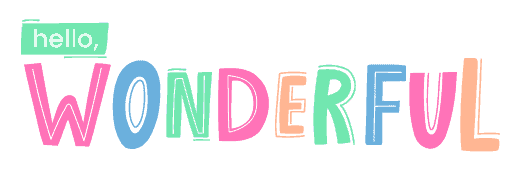
By using this site, you agree to our Terms of Use. This post may contain affiliate links. Read our disclosure policy. As an Amazon Associate I earn from qualifying purchases.
Follow us on Instagram for more fun ideas for kids!
This alphabet dry erase experiment is a fascinating way for kids to learn letters with some science learning in the mix!
Although we’ve only done a couple dry erase activities in the past, this one is very simple and is sure to amaze the kids. If you’re looking for another way in which to teach the kids their letters of the alphabet, this alphabet dry erase experiment will make it even more fun with the floating letters!
We used the low odor, chisel tip Expo dry erase markers, the brighter spring colors pack. We had no idea what to expect, except that we had seen the famous floating dry erase experiment from years ago, the stick figure magic by Steve Mould.
This was our experience and upon reading more about this fascinating yet easy project, we found that results CAN vary!
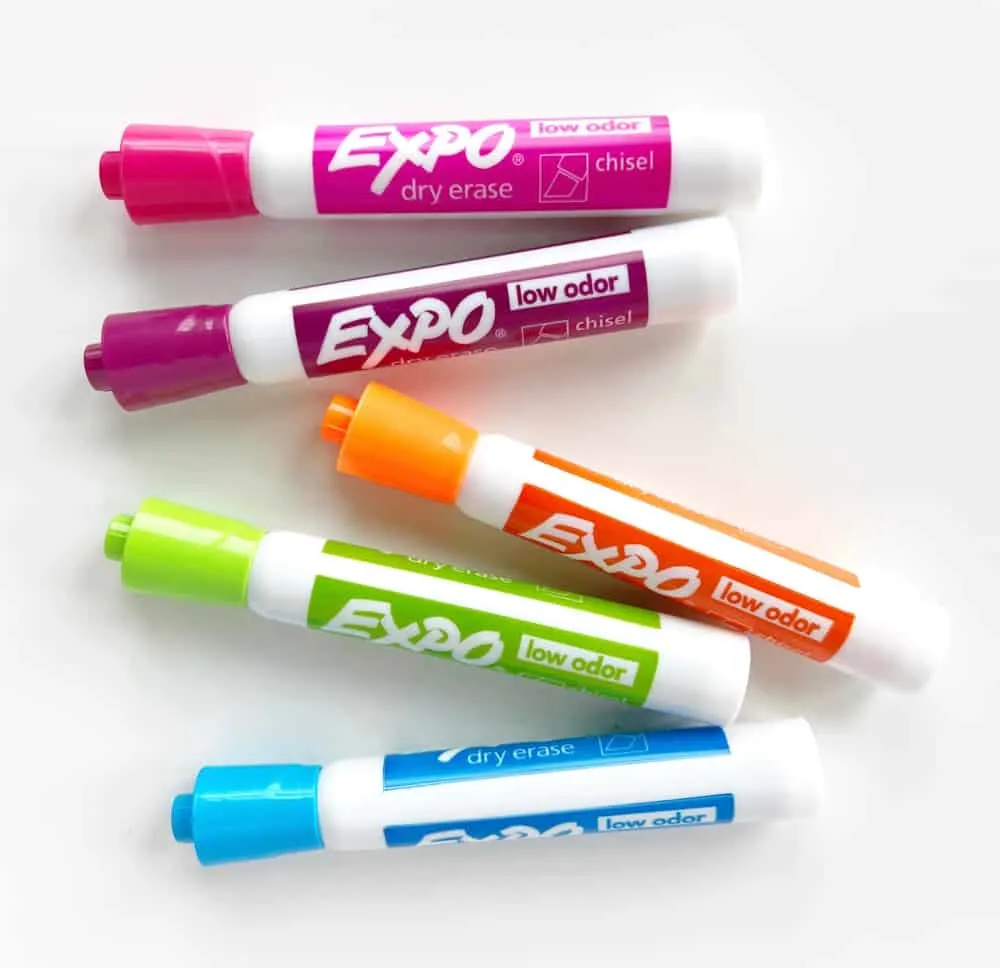
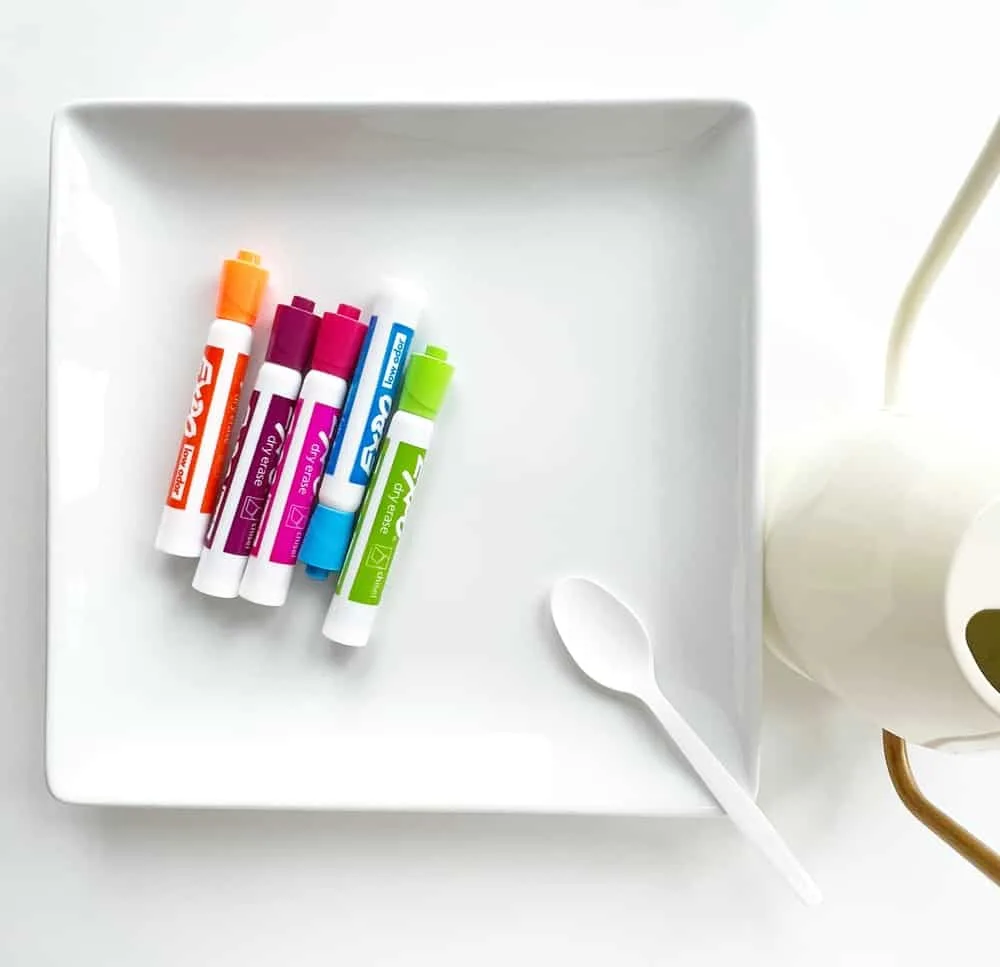
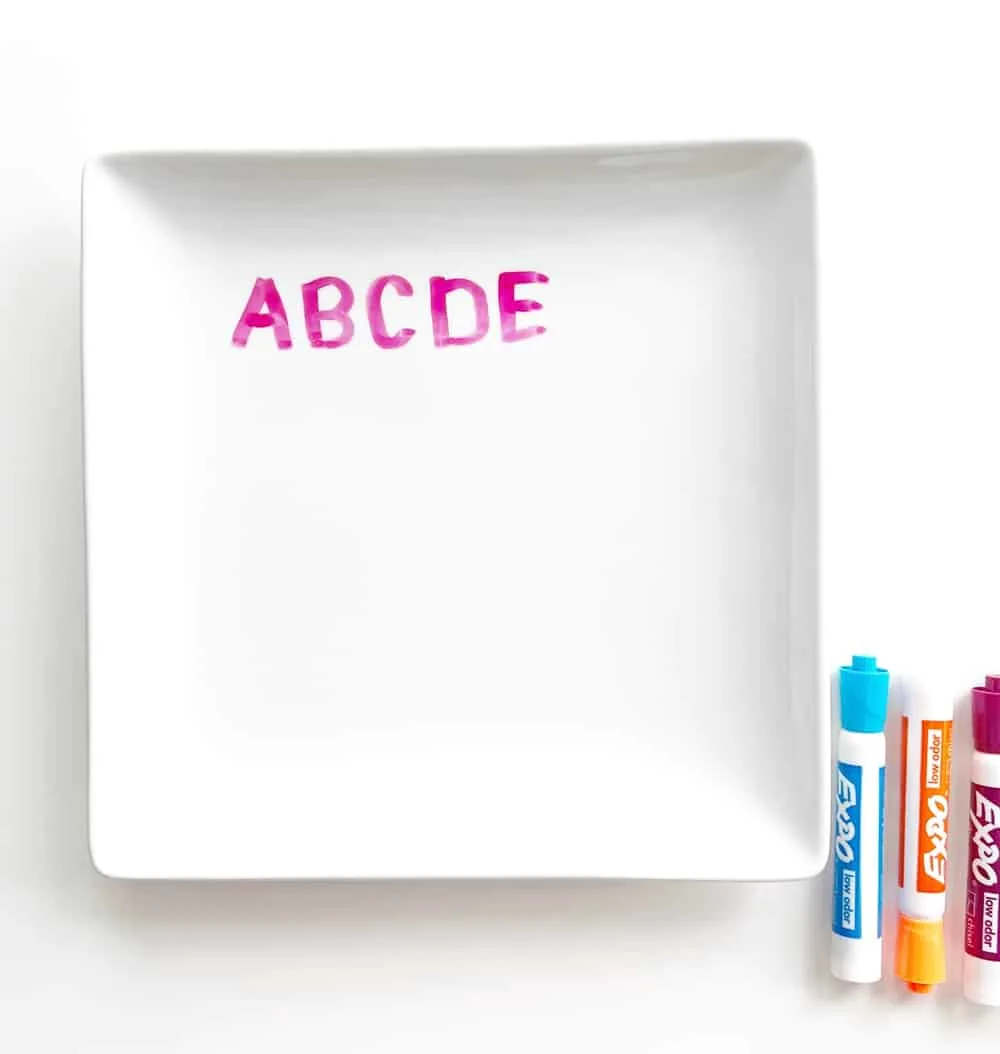
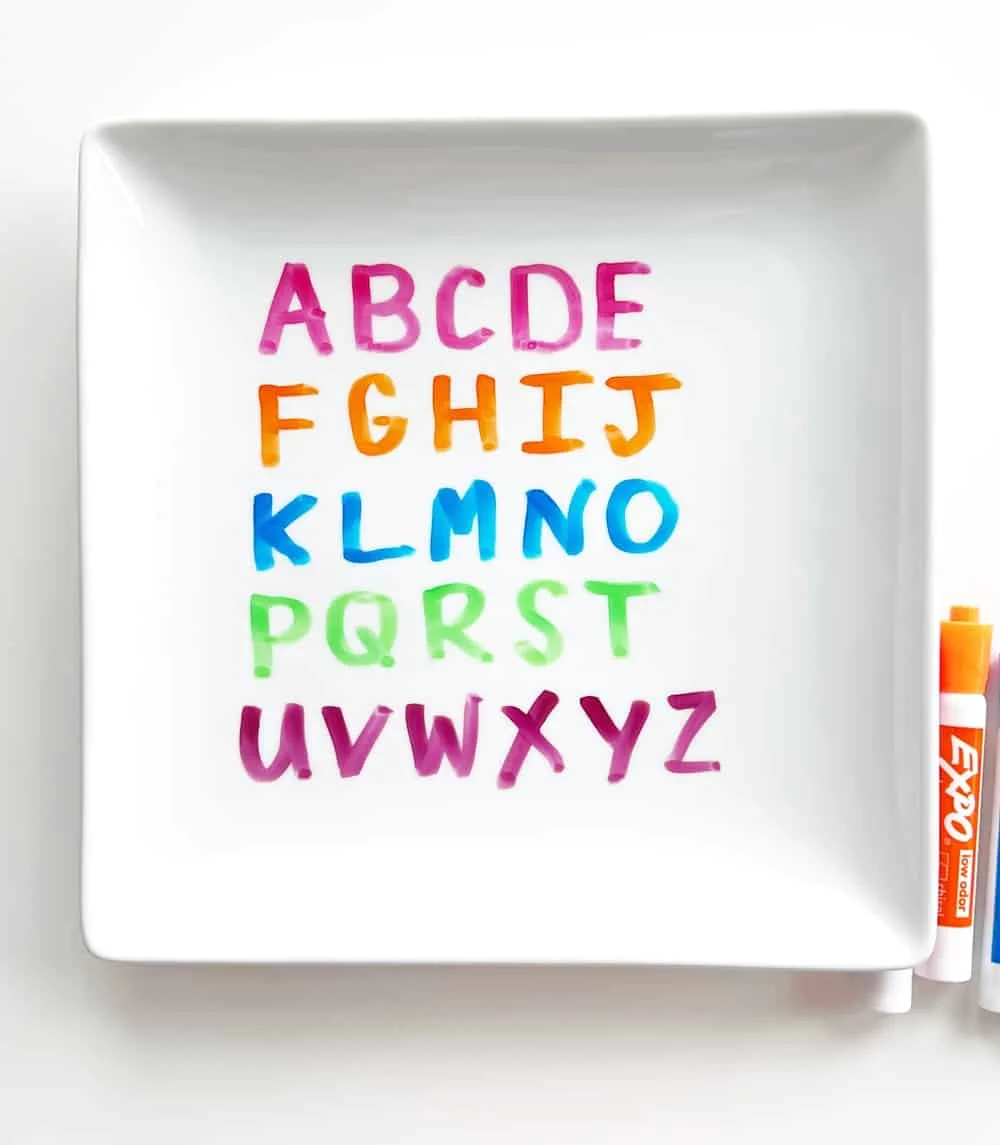
Why does dry erase marker float in water?
Markers like Sharpie and dry erase contain a level of adhesive so the ink sticks to almost any surface we’re able to write on. While Sharpie markers contain a strong amount, dry erase markers use a minimal amount, allowing us to draw, write and quickly wipe away.
According to Mould, the ink in dry erase markers is also insoluble, meaning it can be dissolved in a liquid. When drawn on a smooth surface, the force of the water flowing pulls the letter or drawing off the surface, allowing it to float in the water.
What type of dry erase markers work well?
We tried two types of the same brand Expo dry erase markers because they are the leader in dry erase markers and we didn’t want to start out with a cheap brand. The one you see here is a brand new pack of spring colors. We also had a much older pack at home, regular colors, but the same chisel tip which we tested as well.
It was interesting to see that the newer pack seemed to help remove the letters easier. In the older pack we had, only the blue was able to effectively lift the letters. So we do believe from our limited experiment that you are better off using a brand new pack of dry erase markers when trying this for the first time for best success.
Dry Erase Floating Experiment Materials
Alphabet Dry Erase – Materials:
Shallow Dish
Water
Dry Erase Markers (chisel tip)
Plastic White Spoon
How do you do the Alphabet Dry Erase Floating Water Experiment?
We chose the alphabet for our experiment, but you could also use numbers or even shapes for the activity. In a white shallow plate or pan, write the alphabet directly onto the plate. From the edge or corner of the plate, slowly pour water into the plate. The slower the water is poured the higher the chances of the letters coming off.
Watch the letters magically lift and float on the water. Use a plastic white spoon and either lift the letter onto the spoon and ask your child to identify the letter, or ask your child to find a certain letter floating within the water and see if they can pick it up with the spoon.
What did we discover by doing this dry erase water experiment?
As with any experiment or trying something new, trial and error. As we drew our letters in several of the different colored dry erase markers, we also tried using different temperatures of water (hot, warm, and cold) when pouring.
Another factor we took into account was the dry time of the letters. Although the results weren’t always consistent, in other words, we weren’t completely successful in determining if the temperature of water, dry time, and colors we used had a certain success rate.
As we mentioned above the main factor we isolated in success was the age of the markers. An older pack had less success with only blue lifting off, whereas in this case we had the most consistent success with green, pink, blue, and some of the purple.
It will be fun for your own children to try some of these methods and maybe find some consistency in the results. We don’t think the temperature of the water had that much of an effect but the color of the marker absolutely did in terms of releasing from the plate when we poured the water.
Experiment, try different shapes, methods, and colors. They’re sure to have fun no matter what and most importantly, learn along the way!
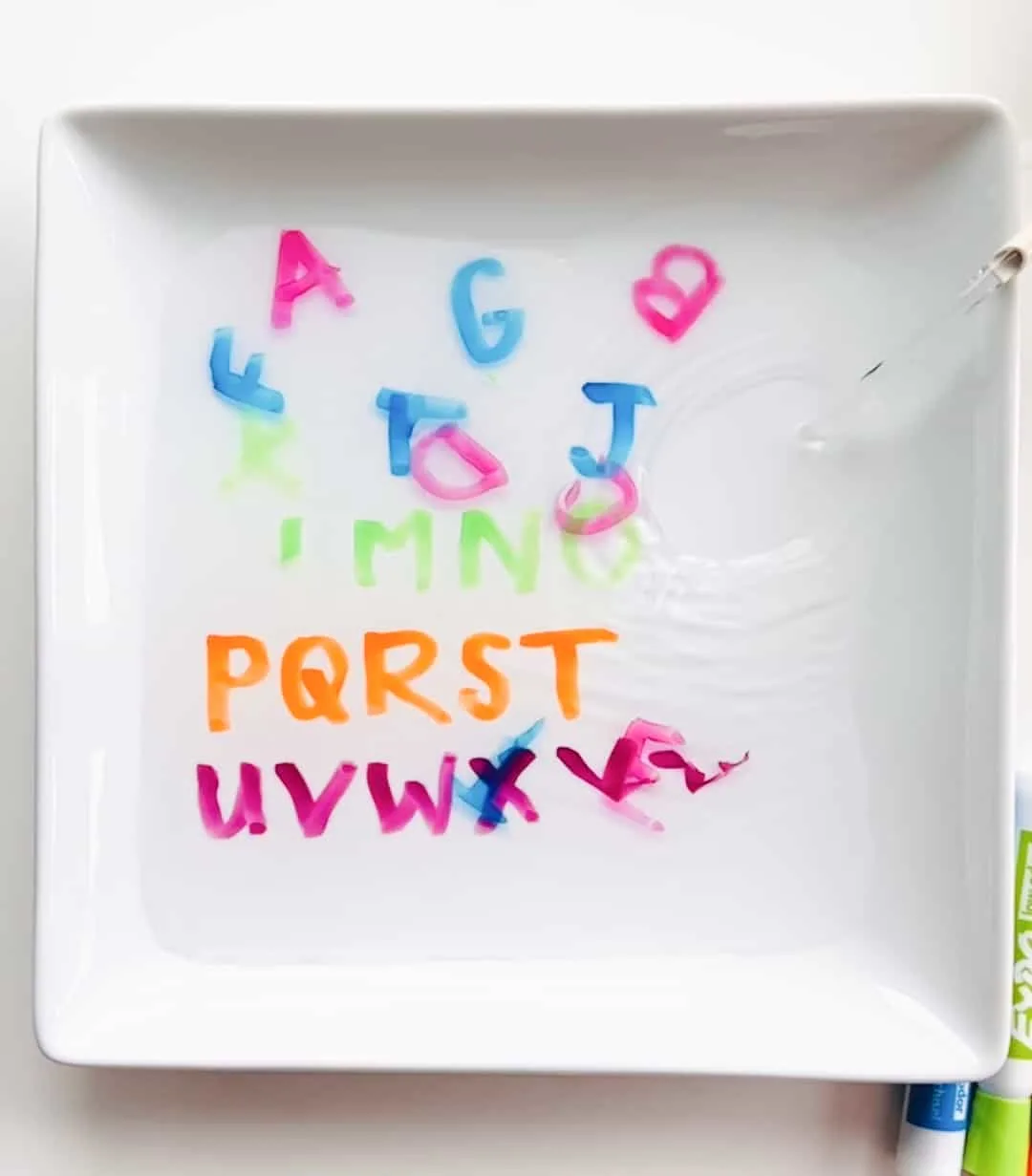
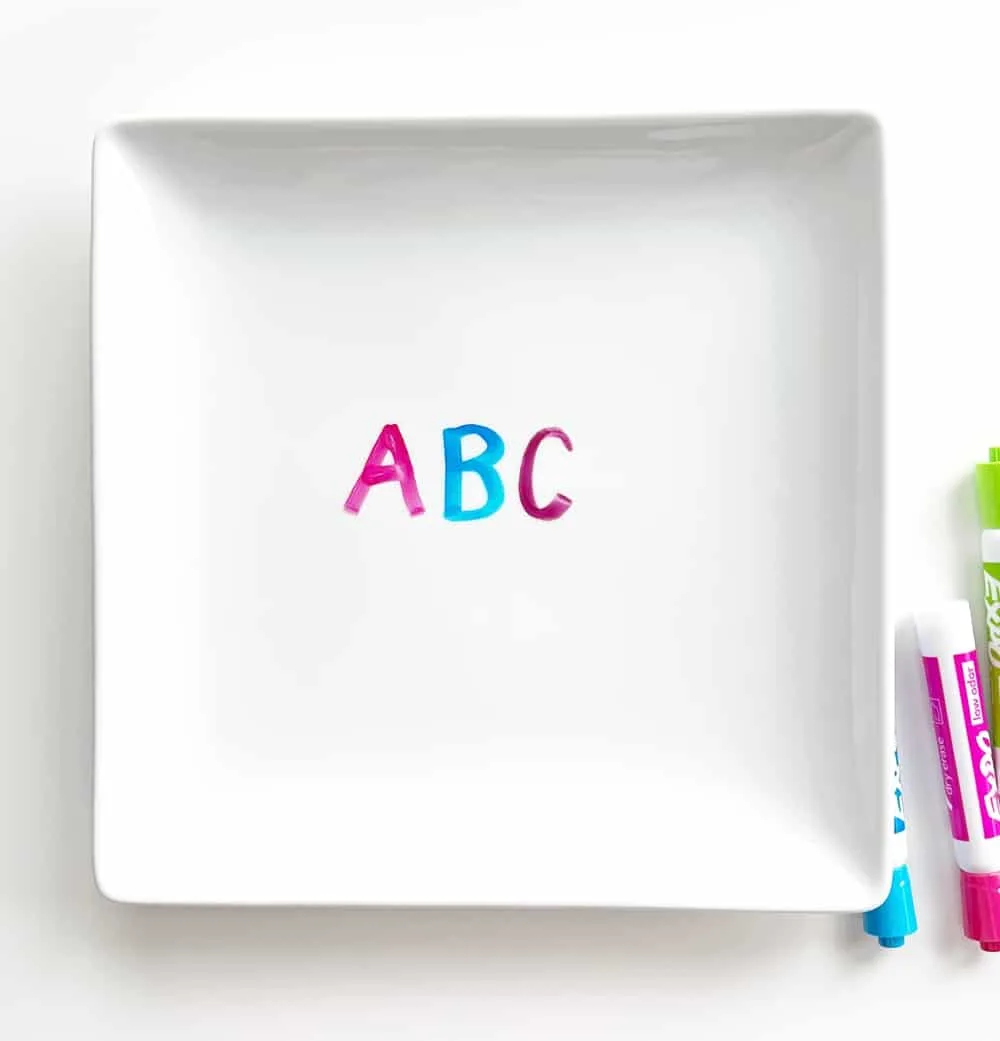
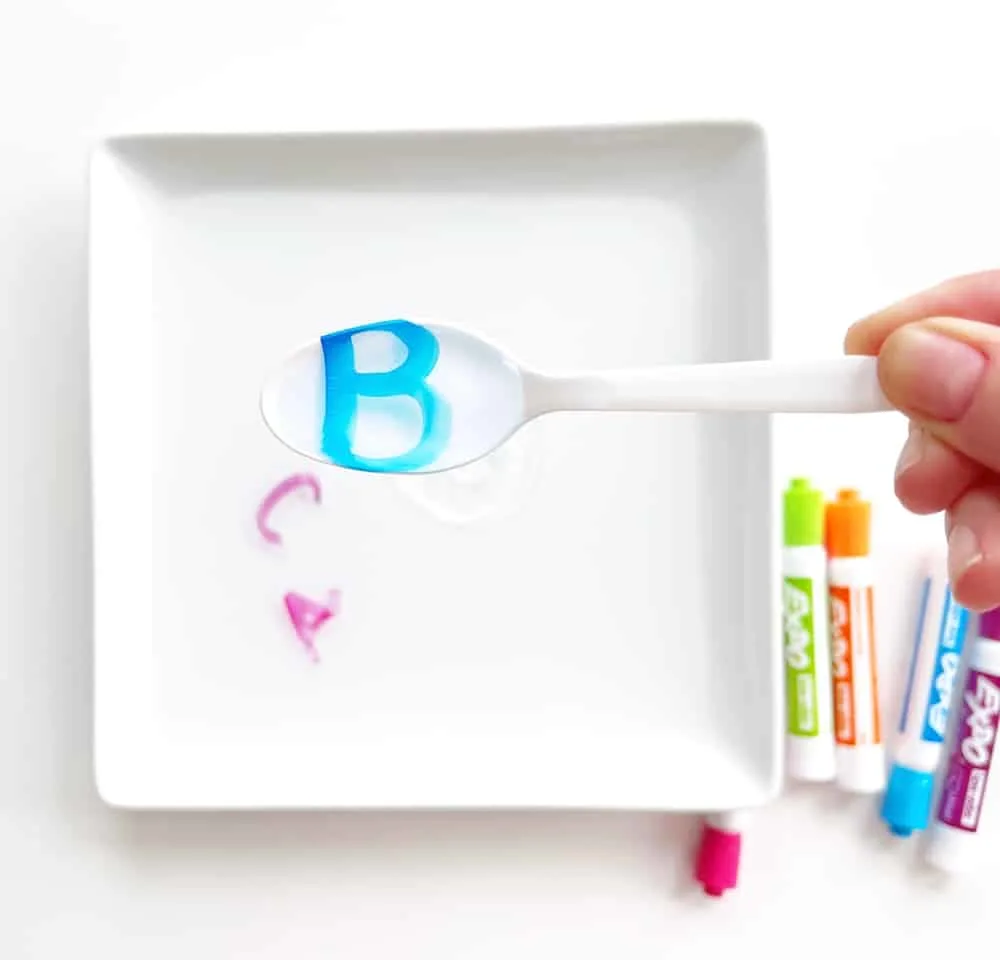
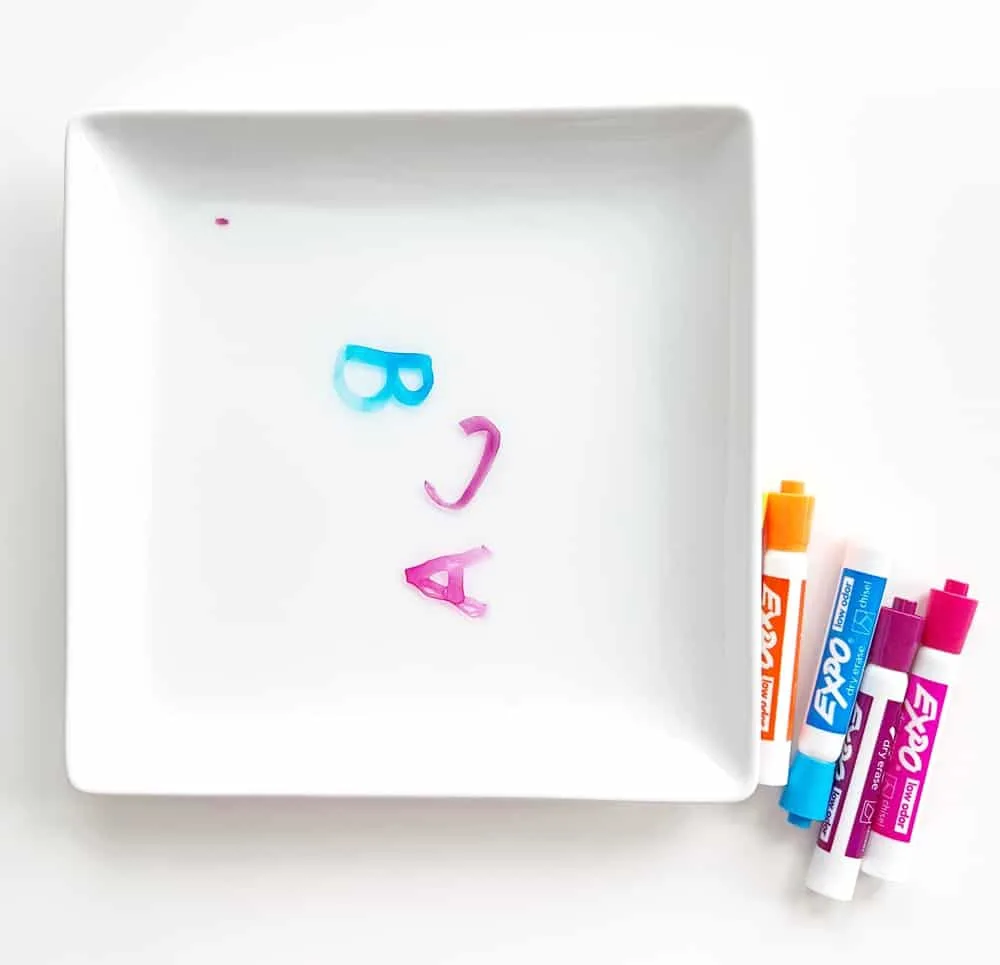
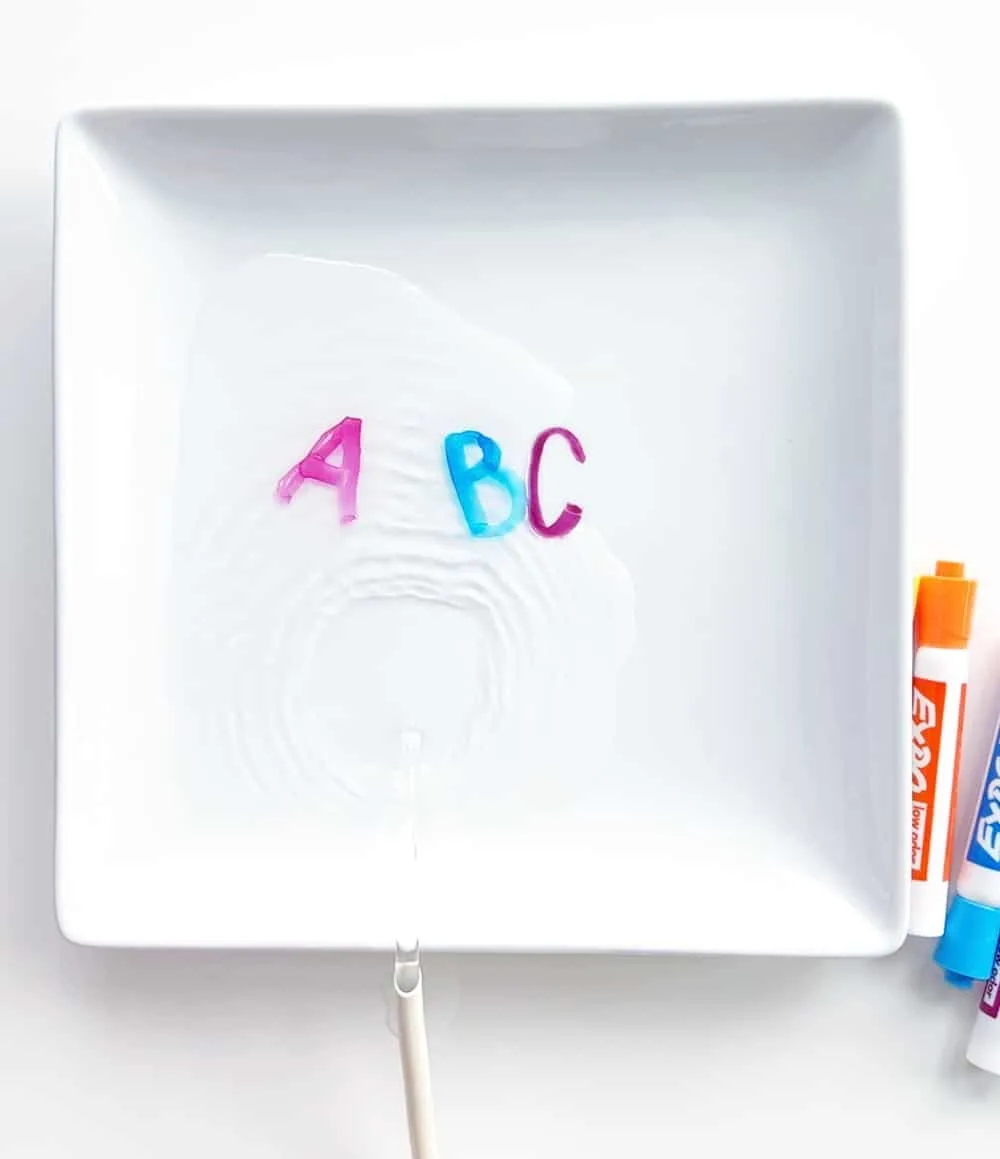
In a white shallow plate or pan, write the alphabet directly onto the plate. From the edge or corner of the plate, slowly pour water into the plate. The slower the water is poured the higher the chances of the letters coming off Watch the letters magically lift and float on the water. Use a plastic white spoon and either lift the letter onto the spoon and ask your child to identify the letter, or ask your child to find a certain letter floating within the water and see if they can pick it up with the spoon.Alphabet Dry Erase Experiment

Materials
Instructions

Jodi is a fun-loving mom of two boys, ages 16 and 11, who live in Minneapolis, Minnesota. As a stay-at-home mom over the years she has taken on the role of renovating just about every space in their home. She enjoys photography, being a brand partner for Young Living essential oils, sports, reading, crafts, exercise, cooking, plants and gardening. Her love language is acts of service and she’s an Enneagram type two, wing three. Follow her on Instagram @jodileigham
Agnes Hsu is a mom of three and has been inspiring parents and kids to get creative with easy activities and family friendly recipes for over 10 years. She shares her love for creative play and kids food to her 2MM+ followers online. Agnes' commitment to playful learning and kindness has not only raised funds for charity but also earned features in prestigious nationwide publications.
